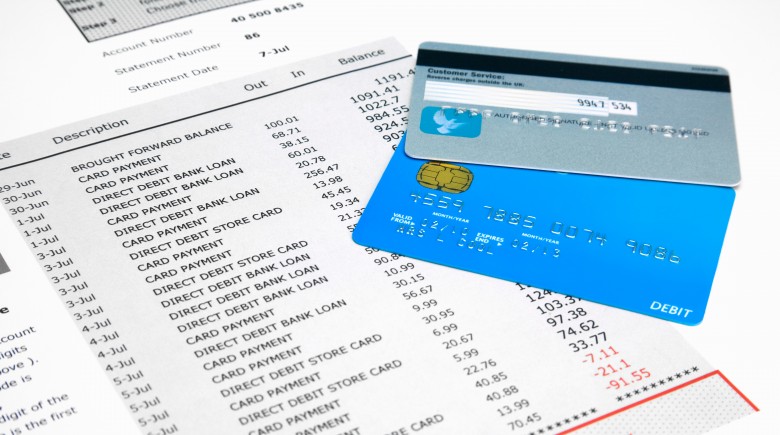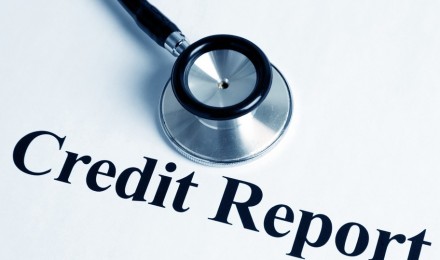Credit card transactions are by far easier than cash. Think of the number of times you’ve reached for your wallet only to realize that you didn’t have cash. Or what about the times you wanted to pay with your bank debit card, but wasn’t sure if you had enough in the account to cover the transaction.
If you know how to control your spending and can pay your credit card balances in full each month, using a credit card is convenient and a simple way to track spending. But although convenient, having a credit card in your name can open the door to identity theft. And nowadays, clever thieves don’t need your actual card to make a purchase. For some, it’s as simple as hacking into your computer or a retailer’s computer system and swiping information.
Keeping your credit card information private is the best way to protect yourself, but even this measure doesn’t guarantee the safety of your personal information. For this reason alone, it’s important that you develop a habit of closely examining your credit card statements for mystery charges.
Some people only glance at their credit card statements, and if the balance looks right, they pay without any further investigation. Unfortunately, this isn’t good enough, as many thieves make a practice of scamming people out of small amounts of money. They know that most people will quickly notice a large charge on their statement. But if there’s a mystery charge of only $2 or $3, scammers bet on the fact that most people won’t notice – and many don’t.
I can identify with this firsthand. About three years ago I discovered a $3 charge while closely checking my credit card statement online. I ignored the charged at first, thinking that I must have pulled out my card to buy lunch or coffee somewhere. However, I became suspicious when the same charge popped up the next month, and after further investigation, I discovered that the charge had appeared on four prior statements. The scam took place right under my nose.
My credit card company credited my account and changed my account number, but I can only imagine how much money these scammers pocketed. This experience taught me a valuable lesson – it doesn’t matter whether your cards are always in your possession – anyone can become a victim.
So, what steps can you take to protect yourself?
1. Sign up for online account management. Don’t wait until your credit card statements arrive in the mail to check for mystery charges. With a computer and Internet access, you can access your account information 24/7. Not that you have to stalk your accounts, but at least two or three times a week, log into your account and make sure that everything is on the up and up.
2. Do some investigative work. Understand that not all mystery charges are scams. For example, some restaurants and retailers have merchant accounts that are under a different name. And if you use your credit card at these establishments, a different, unknown name may appear next to the charge. Don’t immediately panic if you see a mystery charge. Look at the date and time of the transaction, as this can help jog your memory, or call the telephone number listed next to the transaction for additional information on the charge.
3. Notify your credit card company of legitimate mystery charges. It doesn’t matter how big or small, dispute all unauthorized charges. Your credit card company will investigate the claim – usually takes seven to 10 days – and then credit back your account. They’ll also cancel your credit card and assign a new account number.
Credit card transactions are by far easier than cash. Think of the number of times you’ve reached for your wallet only to realize that you didn’t have cash. Or what about the times you wanted to pay with your bank debit card, but wasn’t sure if you had enough in the account to cover the transaction.
If you know how to control your spending and can pay your credit card balances in full each month, using a credit card is convenient and a simple way to track spending. But although convenient, having a credit card in your name can open the door to identity theft. And nowadays, clever thieves don’t need your actual card to make a purchase. For some, it’s as simple as hacking into your computer or a retailer’s computer system and swiping information.
Keeping your credit card information private is the best way to protect yourself, but even this measure doesn’t guarantee the safety of your personal information. For this reason alone, it’s important that you develop a habit of closely examining your credit card statements for mystery charges.
Some people only glance at their credit card statements, and if the balance looks right, they pay without any further investigation. Unfortunately, this isn’t good enough, as many thieves make a practice of scamming people out of small amounts of money. They know that most people will quickly notice a large charge on their statement. But if there’s a mystery charge of only $2 or $3, scammers bet on the fact that most people won’t notice – and many don’t.
I can identify with this firsthand. About three years ago I discovered a $3 charge while closely checking my credit card statement online. I ignored the charged at first, thinking that I must have pulled out my card to buy lunch or coffee somewhere. However, I became suspicious when the same charge popped up the next month, and after further investigation, I discovered that the charge had appeared on four prior statements. The scam took place right under my nose.
My credit card company credited my account and changed my account number, but I can only imagine how much money these scammers pocketed. This experience taught me a valuable lesson – it doesn’t matter whether your cards are always in your possession – anyone can become a victim.
So, what steps can you take to protect yourself?
1. Sign up for online account management. Don’t wait until your credit card statements arrive in the mail to check for mystery charges. With a computer and Internet access, you can access your account information 24/7. Not that you have to stalk your accounts, but at least two or three times a week, log into your account and make sure that everything is on the up and up.
2. Do some investigative work. Understand that not all mystery charges are scams. For example, some restaurants and retailers have merchant accounts that are under a different name. And if you use your credit card at these establishments, a different, unknown name may appear next to the charge. Don’t immediately panic if you see a mystery charge. Look at the date and time of the transaction, as this can help jog your memory, or call the telephone number listed next to the transaction for additional information on the charge.
3. Notify your credit card company of legitimate mystery charges. It doesn’t matter how big or small, dispute all unauthorized charges. Your credit card company will investigate the claim – usually takes seven to 10 days – and then credit back your account. They’ll also cancel your credit card and assign a new account number.








